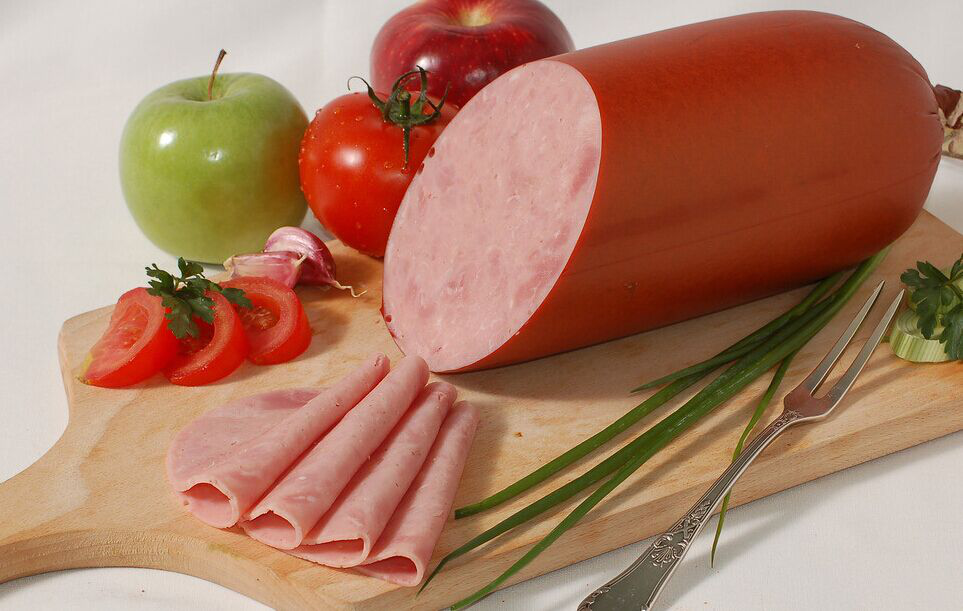Application of Protein Powder in Meat Field
(1) To increase nutritional value and replace lean soy protein is a full-price protein that can be directly absorbed by the human body and is the main indispensable nutritional component of the human body. The protein content of 500G soy protein is equivalent to the protein content of 2 to 2.5 kg of lean pork, and the addition to meat products can also play a complementary role between animal protein and plant protein. There are many benefits to the complementarity of the two proteins. Both the albumin in meat and the soy protein in soy protein belong to the complete protein with high physiological value. The two proteins complement each other and can increase the physiological value of the protein. In the processing of meat products, if the two proteins are properly and reasonably matched, they can greatly increase food value. In addition, soy protein separation can also replace lean meat processing emulsified meat products.

(2) Improving the organizational structure of meat products, improving the quality of meat products, the tightness of the structure of meat products and the homogeneity of the cut surface, mainly related to the viscosity between the organizations in the processing process. During the separation and extraction of soybean protein, the protein viscosity was enhanced by acid-base treatment. As a result, soy protein is added to meat products, and its tissue structure is greatly improved. It can make the internal tissue of the product delicate, good binding, elastic, good slicing, smooth and delicate, taste good, and improve the product. Flexibility, To increase the flavor of the products, but also to maintain the flavor of the original products.
(3) Emulsifying fat is called emulsifying. It is the process of distributing two non-miscible liquids(such as water and fat), one of which is evenly distributed in a droplet or ball in another liquid. Among them, droplet dispersion is called dispersed phase, and the liquid that holds dispersed phase is called continuous phase. The diameter of the generally dispersed phase droplets is between 0.1 and 50 μm. To maintain emulsifying stability, emulsifiers must exist because when fat and water come into contact, there is a large surface tension between the two phases, and the emulsifier molecule has a hydrophilic part and a hydrophobic part(ie, the hydrophilic part).), The hydrophilic part can be combined with water, and the hydrophilic part can be combined with oil, so it can reduce the surface tension between the two phases and increase the stability of the emulsion. In the raw materials of the product, the dispersed phase is a solid or liquid fat sphere, and the continuous phase is an aqueous solution with internal dissolved(or suspended) salt and protein.
In the processing of meat products, soy protein isolate filled in the raw materials of the products serves as an emulsifier in this system, promotes the formation of oily emulsion, and produces a protective layer on the products. If the process is correct and emulsified well, the fat content of the product can reach 40 % to 50 %, and 500G soy protein Emulsifiable fat is about 2.5 kg.

(4) The long chain of water-preserving soybean protein structure can absorb water due to many polar groups, and can retain water in the product and prolong the preservation period. By comparison, in soybean protein products, the absorption of isolated soybean protein was the highest, 3.5 to 4.0 times the dry weight, followed by the concentration of soybean protein, and the absorption of tissue soybean protein was better than soybean meal. The water absorption of soybean protein and the water retention of soybean protein gel are related to pH. When the pH is 4.5, the water absorption and retention are the least, and then the water retention increases with pH greater than or less than 4.5. This function helps to keep the gravy and helps the meat product to maintain a good taste and flavor in the future.
(5) Strengthen the gelation structure of meat products to fill the soy protein isolate molecules in the raw materials of the products and combine them with free fat molecules to form a stable emulsification system. During the thermal processing of the product, the protein on the surface of the fat ball undergoes denaturation to obtain an elastic self-bearing gel, which tightly wraps the fat ball to form a consistent structure and elastic product tissue. If the temperature is 125 °C, the gel is destroyed, and the stable emulsification system is also destroyed, causing the product to oil.
At the same time, the gelation of soybean protein can "solidify" the protein Sol matrix into a stable structure with a certain mechanical strength, increase the chewing sensation of food, and make flexible gel products.
(6) Increasing the output rate of products, reducing costs and increasing economic benefits by adding soy protein to the processing of meat products will not only improve the quality of products, but also increase the output rate of products. Each addition of 500G of soy protein will increase the output rate by 2.5 kg or more. The production rate has increased. The cost of the product will be reduced, and the economic benefits will obviously increase. However, it should be noted that in a formula, soy protein is not added as much as possible, but it must be rooted in the specific circumstances of each formula design, reasonable formula, in order to achieve good results.



